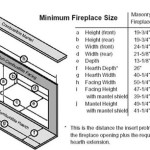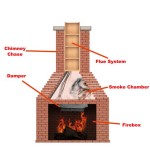External Blower for Fireplace Insert: Enhancing Heating Efficiency
Fireplace inserts offer a significant improvement over traditional open fireplaces by providing increased heating efficiency and reduced heat loss up the chimney. However, even the most efficient fireplace insert can benefit from the addition of an external blower. These blowers, also sometimes referred to as fans, are designed to circulate heated air from the insert into the room, significantly enhancing its heating capability.
An external blower works by drawing cooler room air into a chamber surrounding the firebox of the insert. This air is then heated as it passes over the hot surfaces before being forced back into the room. This forced-air convection process accelerates the distribution of heat, warming a space more quickly and evenly than relying solely on radiant heat from the insert.
The effectiveness of an external blower depends on several factors, including the size and design of the blower, the size of the room being heated, and the insulation levels of the home. Selecting the appropriate blower for a given fireplace insert and living space is crucial for achieving optimal performance.
Improving Heat Distribution
One of the primary benefits of an external blower is its ability to improve heat distribution throughout a room or even an entire home. Without a blower, the heat generated by a fireplace insert tends to concentrate near the unit itself, leading to uneven temperature distribution. This can result in overly warm areas close to the fireplace and colder areas further away.
An external blower actively pushes the heated air away from the fireplace insert, creating a more consistent temperature gradient across the room. This ensures that everyone in the space can enjoy a comfortable and consistent warmth, without some individuals feeling overheated while others remain chilly.
Furthermore, by circulating the heated air more effectively, an external blower can help to reduce drafts and cold spots in a room. This is particularly beneficial in older homes or those with poor insulation, where drafts can contribute to significant heat loss.
Increasing Heating Efficiency
Beyond improving heat distribution, an external blower also increases the overall heating efficiency of a fireplace insert. By rapidly circulating the heat, the blower prevents the insert from overheating. Excessive heat can lead to heat loss through chimney systems and can also damage the firebox over time. Maintaining an optimal operating temperature helps the fireplace insert transfer more of its generated heat into the living space.
The increased efficiency translates to lower fuel consumption, whether using wood, gas, or pellets. The fire is not required to burn as long or as intensely to maintain a comfortable temperature, saving fuel and reducing heating costs. Over time, the savings in fuel costs can offset the initial investment in the external blower.
Moreover, by extracting more heat from the fireplace insert, an external blower reduces the amount of heat lost to the chimney. This not only improves efficiency but also minimizes the risk of creosote buildup in the chimney, which can pose a fire hazard.
Types and Considerations
External blowers for fireplace inserts come in various types and configurations, each with its own advantages and disadvantages. Some blowers are designed to be mounted directly beneath the fireplace insert, while others are standalone units that can be positioned nearby. The selection of the appropriate type depends on the specific model of the fireplace insert and the available space.
When choosing an external blower, it is important to consider its airflow capacity, measured in cubic feet per minute (CFM). A higher CFM rating indicates that the blower can move more air, which is generally desirable for larger rooms or homes with poor insulation. However, it is also important to ensure that the blower is not too powerful, as this can create excessive noise or uncomfortable drafts.
Noise levels are another important consideration. Some blowers operate relatively quietly, while others can produce significant noise. Prior to purchasing a blower, reading reviews or listening to a demonstration can help determine whether the noise level is acceptable. Choosing a blower with variable speed settings can also allow for adjusting the airflow and noise level to suit individual preferences.
The energy efficiency of the blower is another critical factor. Look for models with energy-efficient motors that consume minimal electricity. This will help to reduce operating costs and minimize the environmental impact. Some blowers also feature automatic on/off controls that activate the blower only when the fireplace insert is producing heat, further conserving energy.
Installation is another important consideration. Some external blowers are relatively easy to install, while others may require professional installation. Follow the manufacturer's instructions carefully and ensure that the blower is properly connected and secured. Improper installation can lead to reduced performance, safety hazards, or damage to the fireplace insert.
Finally, regular maintenance is essential to ensure the long-term performance and reliability of an external blower. Periodically cleaning the blower blades and vents will help to remove dust and debris that can impede airflow and reduce efficiency. Check connections for any signs of looseness or damage and replace any worn or damaged components as needed. Regular maintenance will help to keep the blower operating smoothly and efficiently for years to come.

Why Should I Get A Fireplace Blower For My Masonry

Fireplace Blower Fans What You Need For Heat Full Service Chimney

Fireplace Blowers Explained How Fans Work Regency

Outside Air Kits How They Help Your Fireplace Venting

Why Do I Need A Blower Fan On My Fireplace We Love Fire

Pleasant Hearth Circulating Blower For Zero Clearance Ventless Dual Fuel Fireplace Inserts Zcb100 The Home Depot

Why Do I Need A Blower Fan On My Fireplace We Love Fire
Retrofit Larger Blower Fan Hearth Com Forums Home

Linear Direct Vent Complete Low Profile Design 45 Fireplace With Blower Fan And Multi Function Remote Drl3545 F4187 F4900
.aspx?strip=all)
Fireplaces That Work Without Power Be Storm Ready With Regency
Related Posts








